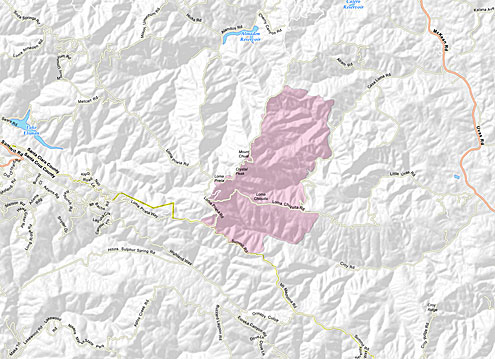By Bruce McPherson, County Supervisor 5th District

As I write, however, smoke from the Loma Fire can be seen on the ridge. The vegetation fire has spread to 3,850 acres in steep, inaccessible terrain and drainages of Mount Loma Prieta, Mount Chual and Uvas Creek.
CALFIRE firefighters throughout California have responded aggressively with 140 engines, 15 helicopters, 59 hand crews, 32 dozers and almost 1,800 total personnel. The firefighters are heroes, each one of them, absolutely no doubt.
In Santa Cruz County, with our history of earthquakes, fires and floods, we also have hundreds of other heroes who have trained throughout the year to respond during emergencies.
The Santa Cruz Community Emergency Response Team (CERT) program educates people about disaster preparedness and trains people in basic skills, such as fire safety, light building rescues, team organization and disaster medical operations. These are good people to have around — and they might be the first ones to assist you in an emergency.
There’s a good chance that a CERT team member is also a member of ARES, the Amateur Radio Emergency Service. These folks have voluntarily registered their services and are working with the Department of Homeland Security, the Federal Emergency Management Agency, the American Red Cross and others. The operators of Santa Cruz County ARES provide communication links for the Santa Cruz County Office of Emergency Services as well as the Red Cross, Salvation Army and major hospitals.
The radio hams also assist another emergency response group that has played an important role in Santa Cruz County for the past decade — the Santa Cruz County Equine Evacuation Unit. A group of more than 200 volunteers, they operate under the auspices of the Santa Cruz County Office of Emergency Services, under the direction of Santa Cruz County Animal Services, and all are certified disaster workers in the county.
Full disclosure here: Robin Musitelli, my chief of staff, is a member and has heightened my awareness of the group (actually, she sings their praises!). They are organized into area teams with designated team leaders. These teams have horse handlers and horse trailers and work with Animals Services and the incident command (fire/sheriff/police) on site to evacuate horses and, where possible, other large domestic animals from designated evacuation areas and take them to County-authorized holding facilities.
During the Summit, Martin and Trabing Fires in 2008, they evacuated more than 500 horses and other livestock, including a pig, some alpacas, etc. Their largest single activation was the Summit Fire. During eight intense hours, they are credited with evacuating more than 240 horses, which was an extraordinary undertaking.
In the Loma Fire, they were organizing within the hour of smoke being reported and were soon staged at Loma Prieta Elementary School to evacuate horses. In the following hours, these volunteers trailered 28 horses and four alpacas to food, water and safety. When a second fire broke out at the end of Lockhart Gulch, the Equine Evac folks, who were on their way home, turned around and again hauled horses from danger.
Santa Cruz County is fortunate to have such a wealth of trained emergency responders, including firefighters, CERT teams, radio operators, and equine evacuation teams. To me, they demonstrate a truth that follows a disaster: When a disaster occurs in a community, what people will remember afterward is how their friends, neighbors and volunteers pulled together and helped.
And please remember: Maintain 100 feet of Defensible Space around all structures.
- Clear all needles and leaves from roofs, eaves and rain gutters
- Trim branches 6 feet from the ground
- Use trimming, mowing and power equipment before 10 a.m.
- Landscape with fire resistant and drought tolerant plants that require little water
- Remove branches away from roofs and 10 feet from the chimney
- Keep wood piles and flammable materials at least 30 feet from the home
- Use fire ignition resistant building material